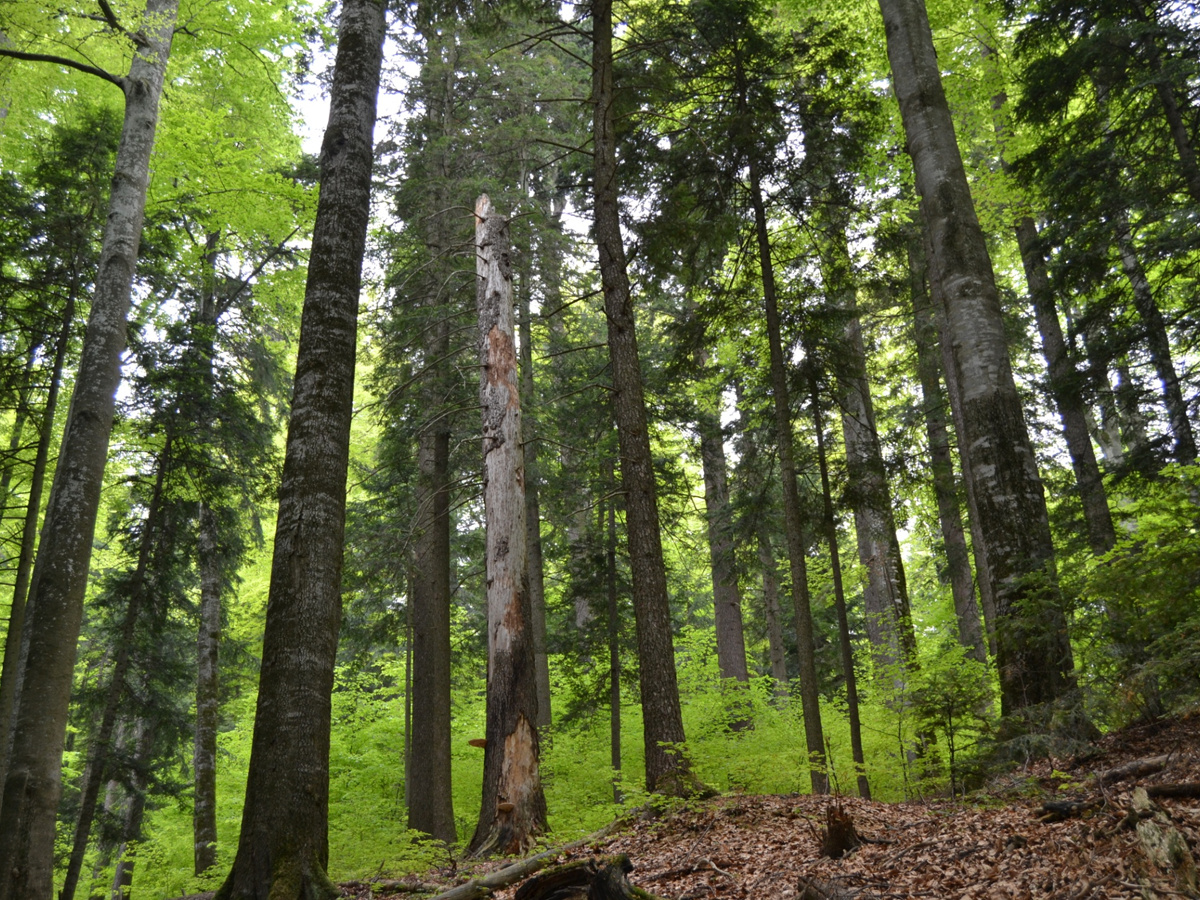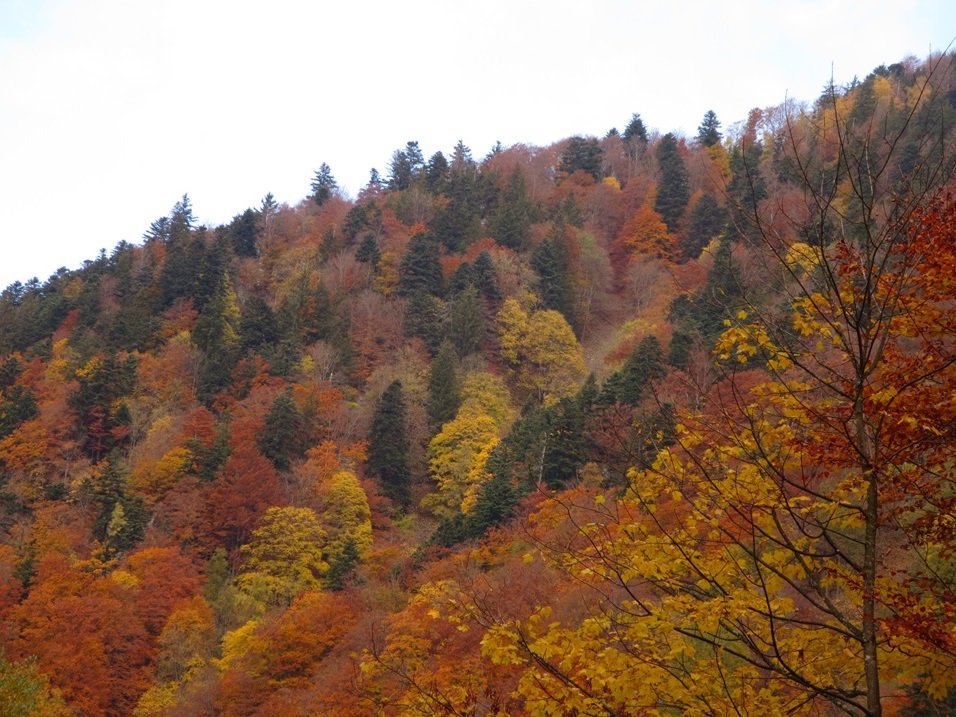Project on increasing resilience of commercial forests
The creation of mixed forest stands is an important strategy for the adaptive forest management under climate change. In contrast to monospecific forests, mixed forests are known for their higher stability and greater resistance to droughts and storms. The mixing of tree species influences multiple ecosystem services in managed forests such as: supply of timber and fuelwood, protection of water and forest soils etc.
In the project BuTaKli – short for “Potential of beech-fir mixed forests to adapt from the climate change impacts in commercial forests” – a total of seven research working groups with the participation of the ITAS are investigating the effects of the admixture beech and fir trees on the increase of adaptive capacity of forests to climate change impacts by doing silvicultural, ecological, economic and social assessments. The researchers have hypothesized that beech trees would show higher resistance to the cycles of very dry periods followed by wet periods without affecting the growth of the fir. They assume that mixed forests could thus adapt more easily to climate change and the accompanying extreme weather events compared to the monospecific forests.
The scientists at ITAS are assessing selected quantifiable ecosystem services and processes of beech fir mixed forests compared to the monospecific forests of the respective species. These include timber, fuel and deadwood, as well as the species and structural diversity of forests. In addition, the ITAS team is doing questionnaire surveys to get opinions on mixing of these two species from the stakeholders and experts in the study region of Freiburg. The aim of the questionnaire survey is to clarify whether and how the mixture of fir and beech trees can also be attributed to ecosystem services which are difficult to quantify e.g. the recreational values and tourist attractiveness of forests. (09.02.2017)
Related links:



